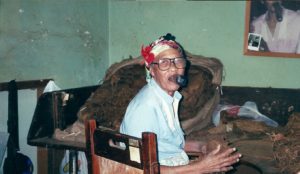
In 2001, I had the opportunity to travel to Cuba on a humanitarian trip, meeting with local Presbyterian church and seminary leaders. This trip was a profound experience, allowing me to connect with the vibrant and resilient Cuban community. We engaged in meaningful discussions about faith, culture, and the challenges faced by the local population, fostering a deep sense of camaraderie and mutual respect.
One of the most memorable moments of my trip was visiting a cigar rolling factory in Havana. I took a picture there, capturing the essence of the place. The cigar rollers, skilled artisans in their craft, were allowed to smoke as they worked, and this particular experienced roller seemed to take full advantage of that perk. The aroma of fresh tobacco and the sight of these craftsmen meticulously rolling cigars is etched in my memory.
Walking around Havana felt like stepping back in time. The streets were filled with classic American cars from the 1950s, beautifully maintained and often brightly painted, cruising alongside horse-drawn carriages. The colonial buildings, with their faded yet elegant facades, told stories of a bygone era. The vibrant colors, the music wafting from every corner, and the warmth of the people created a unique and enchanting atmosphere.
Havana’s charm lies in its ability to blend the past with the present. The city’s historic architecture and vintage cars coexist with the lively spirit of its inhabitants. However, I often wonder how this delicate balance might change with the new travel opportunities and increased tourism. Will the influx of visitors and the inevitable modernization alter the unique character of Havana?
While change is inevitable, my hope is that Havana will retain its distinctive charm and continue to celebrate its rich cultural heritage. The memories of my trip, the people I met, and the experiences I had will always hold a special place in my heart, reminding me of the beauty and resilience of this remarkable city.